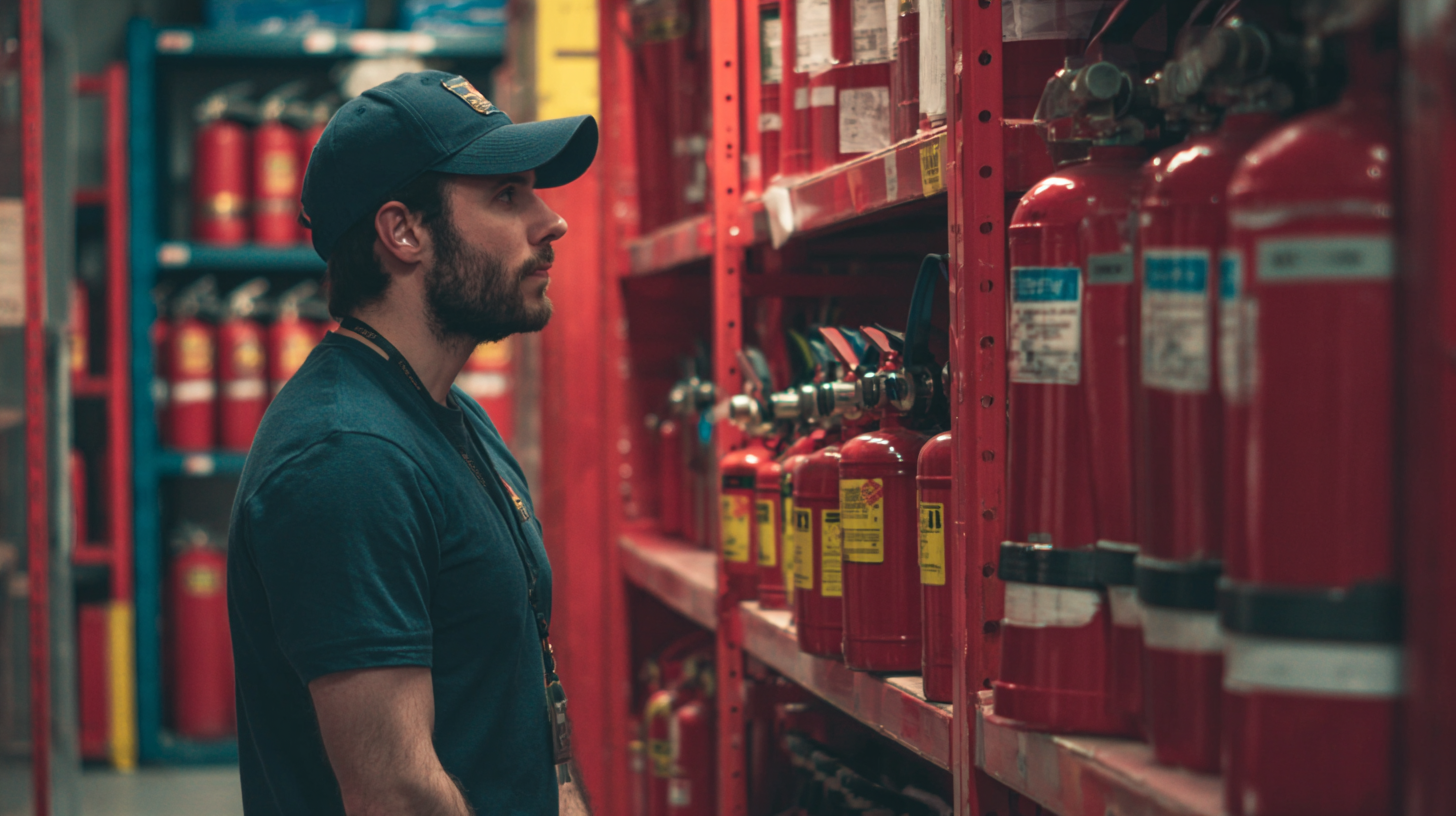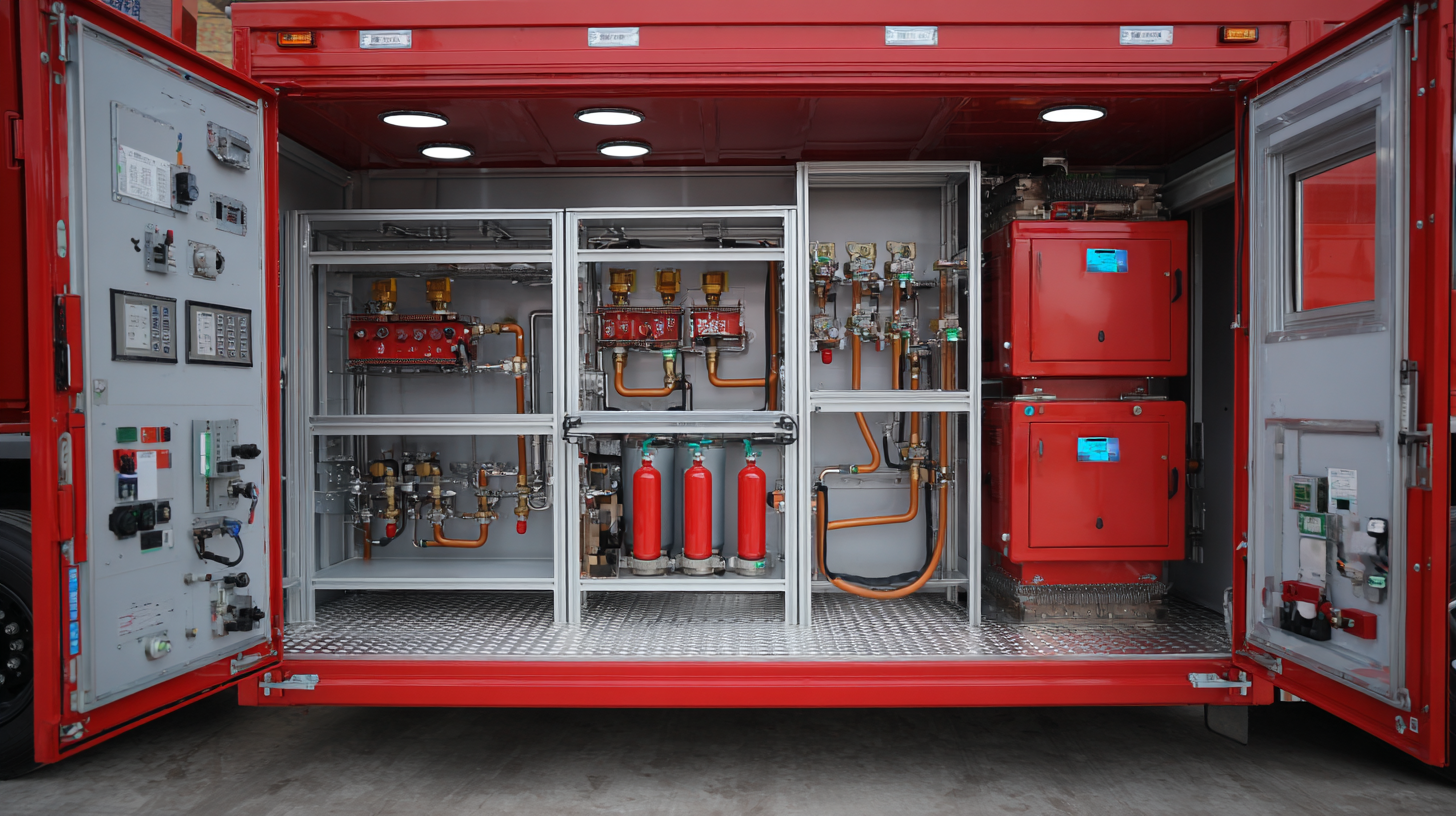Unlocking Global Trade with Fire Safety Equipment Compliance Standards
In an increasingly interconnected world, the importance of complying with fire safety and equipment standards has never been more critical for global trade. According to a report by the National Fire Protection Association (NFPA), fire incidents lead to more than $21 billion in property damage annually in the United States alone, highlighting the urgent need for stringent fire safety measures. As countries like China continue to enhance their manufacturing capabilities, the focus on fire safety and equipment compliance becomes paramount. With nearly 300,000 factories in China now adhering to international fire safety standards, the commitment to quality is gaining global recognition. This blog will delve into how compliance with fire safety and equipment regulations not only safeguards lives and property but also unlocks new avenues for international trade, thereby allowing "Made in China" products to earn worldwide respect through superior quality.

The Importance of Fire Safety Equipment Compliance in Global Trade
In the realm of global trade, the significance of fire safety equipment compliance cannot be overstated. According to a report from the National Fire Protection Association (NFPA), fire-related incidents account for an estimated $328 billion in direct and indirect costs annually in the U.S. alone. This staggering figure emphasizes the critical need for adherence to safety standards, as non-compliance can lead not only to devastating losses but also to legal repercussions and damage to a company’s reputation. Ensuring that fire safety equipment meets international compliance standards is essential for businesses looking to engage in the global marketplace.
Moreover, the International Organization for Standardization (ISO) has highlighted that over 70% of companies lack proper knowledge about fire safety compliance requirements in different regions. This knowledge gap poses a significant challenge as companies navigate the complexities of global trade. Compliance with recognized standards, such as those outlined in ISO 13943 and NFPA codes, provides a framework that aids in the development of reliable products. By prioritizing these guidelines, companies can enhance their marketability while ensuring the safety and protection of their employees and assets worldwide. Emphasizing compliance not only safeguards lives but also fortifies the overall integrity of global trade channels.
Unlocking Global Trade with Fire Safety Equipment Compliance Standards
| Region | Compliance Standard | Certification Requirements | Common Equipment | Market Access Impact |
|---|---|---|---|---|
| North America | NFPA 10, UL 299 | Third-party testing and certification | Fire extinguishers, hoses | Required for retail and distribution |
| European Union | EN 3, EN 1869 | CE marking and documentation | Fire blankets, extinguishers | Mandatory for sales in EU countries |
| Asia-Pacific | AS 2444, ISO 14001 | Compliance with local regulations | Sprinkler systems, fire alarms | Essential for construction and safety certification |
| Middle East | UAE Fire and Life Safety Code | Local authority approvals | Fire alarms, hydrants | Crucial for compliance in construction projects |
| South America | ABNT NBR 13434 | Local certification required | Extinguishing agents, hoses | Limits trade opportunities without certification |
Navigating International Standards for Fire Safety Equipment
The importance of adhering to international standards for fire safety equipment cannot be overstated, especially in a globalized market. According to the Fire Safety Equipment Manufacturers Association (FSEMA), the global fire safety equipment market is projected to reach $67.2 billion by 2026, growing at a CAGR of 7.3%. This growth underscores the necessity for manufacturers to navigate a complex web of compliance standards across different countries. Each region has its own set of regulations, such as NFPA in the United States and EN standards in Europe, which dictate performance, testing, and labeling requirements. Understanding these standards is crucial for businesses looking to enter new markets or expand their existing operations.
Moreover, the International Organization for Standardization (ISO) has been instrumental in harmonizing fire safety equipment standards worldwide. The ISO 9001 certification, for instance, ensures that organizations meet consistent quality management criteria, which is increasingly demanded by customers globally. Compliance with these international standards not only enhances product credibility but also minimizes risks and liabilities associated with fire safety failures. As new markets emerge and regulations evolve, staying informed and compliant with these standards will be key for companies aiming to thrive in the international trade landscape.

The Role of Chinese Manufacturers in Meeting Global Quality Standards
In the complex landscape of global trade, the role of Chinese manufacturers in producing fire safety equipment that adheres to international compliance standards is crucial. According to a report by MarketsandMarkets, the global fire safety equipment market is projected to reach $99.7 billion by 2025, growing at a CAGR of 6.7%. This increase is partly driven by the stricter safety regulations implemented worldwide, which necessitate manufacturers to meet high-quality standards. Chinese manufacturers have risen to this challenge, investing in advanced technologies and quality assurance processes to ensure their products comply with globally recognized standards such as UL, EN, and ISO.
Moreover, the integration of stringent quality controls has allowed Chinese manufacturers to significantly enhance their reputation in the global market. A study by ResearchAndMarkets highlights that about 40% of fire safety equipment exported from China is now certified to meet Western standards, marking a substantial improvement in quality assurance practices. These advancements not only facilitate easier market access for Chinese products but also bolster consumer confidence in their safety and reliability. As the demand for fire safety equipment continues to ascend globally, the commitment of Chinese manufacturers to compliance standards will be pivotal in unlocking new opportunities in international trade.
Strategies for Ensuring Compliance in Exporting Fire Safety Products
In the complex landscape of global trade, ensuring compliance with fire safety equipment standards is paramount for exporters. Different countries have varying regulations, making it essential for businesses to stay informed about the requirements specific to their target markets. One effective strategy is to conduct thorough research on regional safety standards before initiating the export process. This can involve consulting industry associations or leveraging local experts who understand the intricacies of compliance.
Tip: Create a comprehensive checklist that details the compliance requirements for each market you are entering. This should include necessary certifications, testing protocols, and documentation required for customs clearance.
 Additionally, establishing partnerships with local distributors can provide valuable insights and enhance compliance efforts. These partnerships can help navigate regulatory landscapes and facilitate quicker adaptation to changes in laws. Staying proactive in communication with these partners ensures that any modifications to safety standards are promptly addressed, minimizing the risk of penalties or product recalls.
Additionally, establishing partnerships with local distributors can provide valuable insights and enhance compliance efforts. These partnerships can help navigate regulatory landscapes and facilitate quicker adaptation to changes in laws. Staying proactive in communication with these partners ensures that any modifications to safety standards are promptly addressed, minimizing the risk of penalties or product recalls.
Tip: Regularly train your team on the latest trends and regulations in fire safety standards to foster a culture of compliance and awareness throughout your organization. This not only mitigates risks but also builds customer trust in your products.
Building Trust Through Quality: The Future of Global Trade in Fire Safety Equipment
In the evolving landscape of global trade, the importance of compliance standards in fire safety equipment cannot be overstated. A report by MarketsandMarkets projected that the global fire safety equipment market will reach $100 billion by 2025, emphasizing a robust demand for high-quality products that adhere to international regulations. Quality assurance not only protects consumers but also builds trust among manufacturers, suppliers, and end-users. With various regulatory bodies across regions pushing for stricter compliance measures, companies that prioritize adherence to these standards are better positioned to succeed in the competitive marketplace.
Moreover, establishing a reputation for quality is essential for fostering long-term partnerships and customer loyalty. According to a study by the National Fire Protection Association, where compliance drives innovation, companies can achieve up to 30% reduction in operational risks and a significant boost in customer satisfaction ratings. In an industry where safety is paramount, implementing rigorous compliance standards can catalyze trust, enhance brand equity, and ultimately facilitate smoother international trade. As stakeholders recognize the integral role of quality assurance, the future of global trade in fire safety equipment appears promising, driven by a commitment to excellence and safety compliance.
Global Trade in Fire Safety Equipment Compliance Standards
This chart illustrates the compliance rates of different regions in meeting fire safety equipment standards, highlighting the importance of quality and trust in global trade.
